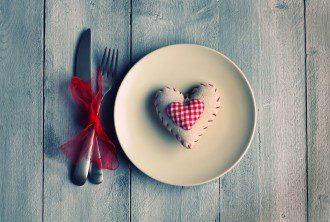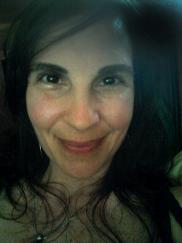Guest Writer for Wake Up World
There are so many different diets to choose from these days. Vegetarian, Vegan, Paleo, GAPS, Blood-type, and Raw are some of the more popular. Each one has its own guidelines and logic that dictates what someone who adheres to that particular diet can and can’t eat. Whether it’s for health, or moral reasons, proponents of each diet often promote it as ‘the way’. One of the most centrally focused, and highly debated aspects of these diets is whether they include the consumption of animal products. But is there really a one size fits all dietary approach that meets our complex, individual, and changing needs as humans? I don’t think so.
As a child I grew up on a small hobby farm. We had a couple cows, chickens and very occasionally pigs. All our animals had names, they were cherished and considered part of family; yet sometimes we ate them. On the property next to ours there was a small hippy commune and to the kids that lived there my family was known as ‘the meat-eaters next door’. Being an animal lover I found this difficult and once I was old enough to make my own food decisions I became vegetarian. For years nary a piece of meat crossed my lips.
[pro_ad_display_adzone id=”110028″]
One of the aspects I found most difficult about being vegetarian was the reaction of family and friends. Many responded as if my choice to not eat meat was merely a statement to highlight and challenge their food choices and a means to be special. In those days there were often not many vegetarian options at restaurants and often I would have to ask for an individual meal created just for me. At family dinners my refusal to partake in the food being served acted to isolate me and dampen the communal vibe.
Somewhere along the line I read that Buddha told his followers, wandering nuns and monks who relied on the kindness of others for their food, never to turn their nose up to an offering, even if it contained meat. Of course when Buddha was alive there were no factory farms and all food was ‘clean’ in terms of chemicals, yet still this idea resonated with me. I tweaked my staunch approach so that, while I would not buy meat of my own accord, when a guest at someone’s home I would partake in whatever I was offered.
Then, after more than a decade of eating mainly vegetarian, I found myself with some serious health issues. I am not suggesting that being vegetarian compromised my health, but, only when I reintroduced small amounts of meat, bone-broths and fermented vegetables, did I start seeing improvement in my overall wellbeing.
Initially the decision to stop being vegetarian was a difficult one to make. I realized that part of my identity was constructed around my position on food, and abandoning this position brought a lot of personal issues to the fore. I didn’t want to be ‘a meat-eater’. However the more I explored myself and my relationship to food the more it dawned on me that I was happy to be free of a label that dictated what I consumed. I wanted to be able to eat whatever felt right in the moment. I wanted to pay more attention to my body, to learn to listen to its needs, and to have flexibility to respond to changing internal and external conditions. I also wanted to consider the wellbeing of what I was eating as well as the planet that sustains us all. That is when the initial concept of ‘heart aligned’ eating began to crystallise in my mind.
Just because I was going to introduce some meat into my diet didn’t mean I had to reject the values that I was comfortable with. I would not support the disgrace that we call factory farms. I do not want to contribute to the suffering of any life form. Nor do I want to put the energy of distress and anguish into my body. When I examine issues like this I find it useful to ask myself how I would feel in the role. Personally I would be ok with a short life as an animal, as long as I had a decent existence. Of course this is a very personal question and depending on our nature and beliefs we will have different answers.
In what I call ‘heart aligned eating’ there are no rules, or restrictions, except that dietary decisions are based on love; there is room for flow and change from moment to moment. For me the guiding principal is conscious consideration of all the aspects included in the act of consumption: the food, the planet, my body, the people I am with. Heart aligned eating is highly personal and involves no judgement of other people’s food choices.
In a group situation, though I am not always excited about it, I usually choose to partake in whatever food is being shared. In most cases this feels right for me and the overall energy feels better than if I shunned the food that someone lovingly prepared. However, in our own home we don’t purchase factory farmed produce. Our family buys meat that we know has been as ethically raised as possible, preferably from local farmers. If available we will choose organic because it is better for our bodies, and the planet. Obviously these considerations make for a more expensive option, but by choosing to eat less meat, and rarely eating out, we can afford to make this sacrifice. It’s all about priorities and for us our food is more of a priority than material objects and convenience. With vegetables we also buy as much local and organically grown as possible.
The further I have gone down this path the more I have learned to listen to the needs of my body. This has not been easy because living in a society that teaches that high levels of sugar and processed foods is normal, internal signals and cravings have been distorted and the journey towards realignment has been challenging. Food diaries, short term elimination diets, and meditation can be helpful to re-establish a connection with the true requirements of our bodies. We are each incredibly unique creatures, with our own personal nutritional requirements that can change depending on our circumstances. What works for one person may affect another adversely. Heart aligned eating allows each person to establish an individual dietary routine that comes from within rather than from an externally oriented source.
In a perfect world there would be no factory farms, toxic pesticides, or low quality processed food. In the past, in many tribal societies, an awareness that inextricably connected the individual to all aspects of the wider world was an innate part existence. Community shamans were in tune with the natural balance of life and were guided by a level of respect towards everything in their environment. Unfortunately this is a perspective that we, convinced of our superiority, long ago disregarded for the sake of convenience and efficiency. We consider ourselves to be more evolved than our ancestors, and scoff at their animistic beliefs, however science is now coming full circle and gradually it is becoming less absurd to believe that all life forms have a spiritual essence. For example we now know that plants communicate and are as motivated toward self-preservation as any other life form (while they can’t run away, they release certain chemicals when threatened).
Ultimately all is energy and in this world one life form survives by consuming another. But when we shift to a heart focused perspective we cease operating from disconnection and instead adopt a loving approach in our interaction with ourselves and our environment; one that reflects and honours our intimate connection with all that is.
Previous articles by Christina Lavers:
- New Study Shows Regular Contact with Nature Reduces Crime, Increases Social Cohesion
- Research Shows Just 7 Minutes of Meditation Can Reduce Racial Prejudice
- Groundbreaking Study Maps the Decline of Wild Bee Communities in the United States
- More Evidence That TV is Dumbing Us Down
- Taking Care of Our Inner Tribes – Microflora, Awakening and You
- Taking Responsibility For Our Energy
- Discernment – Navigating The Spiritual Minefield
- TV: Cutting the Cord
- Heart Aligned Eating: Beyond Dietary Absolutes
- The Art Of Failing Well
About the author:
Christina Lavers is a writer, an artist, a creative enthusiast, and an inner world explorer. Born in Montreal Quebec Canada, she now lives with her life partner and son in a rainforest pocket in the hills behind Coffs Harbour, NSW Australia. She spends her time playing, creating, growing and sharing.
“My journey has been about personal alchemy… exploring the mysteries of my soul and my environment, and learning to bring all aspects, the light and the dark, together with the transcending ingredient… love. The more I uncover and nurture the wounded aspects of my being, the more whole and grounded I feel and the more my outer world reflects the love, wonder and magic I have discovered inside”.
Christina is devoted to assisting people to find and connect with their own creative magical current that flows deep within. She is now offering a comprehensive e-course designed to help people light up their world with passion and creativity. You can access Section One here for free!
Christina has recently published her first full length book, a memoir about her wild awakening journey entitled Jump Into the Blue, and she is currently working on the next one.
You can follow Christina’s work at:
[pro_ad_display_adzone id=”110027″]








